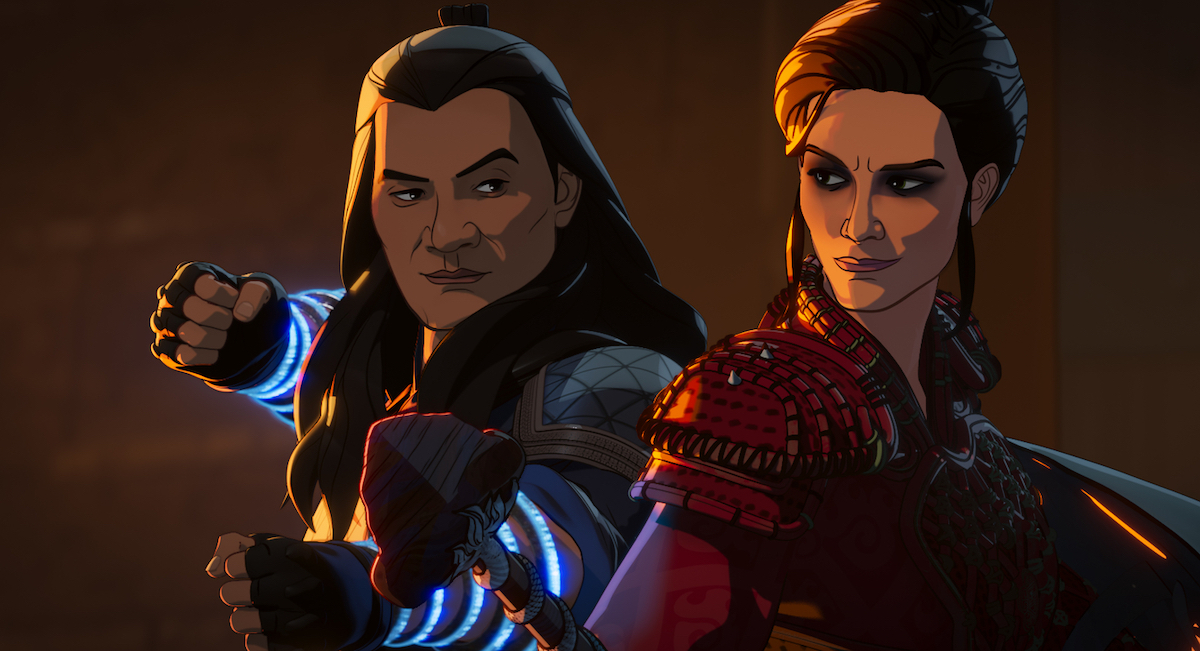Marvel Just Redeemed Its Least Redeemable Character in ‘What If…?’
Ah, shoot, now I want a dozen sequels!

Episode 7 of Marvel’s What if…? season 2, “What If… Hela Found the Ten Rings?,” has dropped! If you thought there was a single villain in the Marvel Cinematic Universe who was too evil for a redemption arc, you thought wrong.
Spoilers for What If…? season 2, episode 7 ahead!
To recap: Instead of locking Hela (Cate Blanchett) away in Hel after she helped conquer the Nine Realms, Odin casts her out to Midgard (i.e., Earth). Odin sends her crown after her, with a caveat: he whispers an enchantment into it specifying that she can only get her powers back if she learns mercy. Hela winds up in Ta Lo, where Jiayi takes her on as a martial arts student. In the process, she figures out that what she really wants isn’t an eternity of indiscriminate killing, but freedom to choose her own path in life.
Hela faces off against Odin again, defeating him with the help of Wenwu and the ten rings. In the process, she shows mercy, granting her the power of her crown and a new white version of her iconic outfit.
What made Hela so fantastic in Thor: Ragnarok was Blanchett’s portrayal of her: she’s a nasty one, sure, but she has an irresistible charm. In What If…?, Hela’s sarcasm and smugness gives way to deeper pain: her father has always treated her like a monster, when all she really wants is freedom. Plus, seeing Hela try to figure out Morris (that furry winged thing with no face from Shang-Chi) is hilarious.
But, when Hela does get the freedom she wants, she doesn’t stop with herself. Instead, she vows to extend that freedom to everyone in the Nine Realms. We don’t know what exactly that freedom looks like—and we don’t really need to, considering Asgard’s history of violent conquest—but what’s important is that Hela learns how precious life is.
That might seem like a weird direction for a death goddess. But in myths all over the world, deities of death and the underworld are also guardians of life. There are multiple goddesses, for example—Ishtar, the Morrigan—who govern both war and fertility. Life and death, war and abundance: they’re two sides of the same coin, and it actually makes a kind of sense that the goddess of death would also be a champion for life. After all, if anyone knows how fragile life is, it’s her.
Plus, it’s really satisfying to see Hela’s deeper layers, from her ability to put up with Morris to her transformation at the end. It shows that even the most seemingly irredeemable villain is human (or Asgardian) at heart. The best villains are the ones whose pain you can understand, and it’s hard for those characters to stay villains forever.
As poet Joy Harjo wrote, “Even the monster has a story.” I’m really glad we got to see a little more of Hela’s.
(featured image: Disney+)
Have a tip we should know? [email protected]
